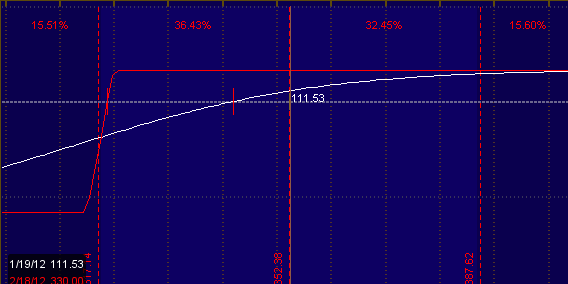 We've all been there.
We've all been there.
You're in an option trade, and maybe its going well for you. And you're all set to close the position, except...
Except, well, you could just let it expire worthless.
Or you could wait until tomorrow to see if it rips higher.
And then the outcome that you wanted never happens and you are left with an option position that is less than ideal.
Not fun.
Trading Options Changes Things.
Options trading brings a whole new element to trader psychology because there are extra dimensions outside of price movement-- namely, time.
And if you don't plan your exits the right way, you will not succeed as a trader.
Here are 4 option techniques to help you get started in controlling your greed.
1. Have price targets
This technique actually contains a few components. By price, we normally think of stock price.
But you can also have a target for your option as well.
With today's option analysis software, this isn't that difficult to do.
If a stock is trading at 10 and you buy the 10 call, you can figure out how much that call will be worth if the underlying moves 2 points. If you know your price target on the underlying, you can build a price target on the option and start to define your exits.
2. Have time targets
Options have a time component, and is a critical variable many new traders gloss over when planning trades.
Let's say you open a 5-strike bull put spread for 1.00. That means your max reward is 1.00 and your max risk is 4.00. There are 45 days to options expiration.
If the stock moves higher tomorrow and the spread is now worth .25, should you consider exiting already?
Think about it-- you captured 75% of the credit with 44 days left in the life of the option. There's a lot that can happen in 44 days!

There's no magic set of rules that you can take to get optimum results. It comes down to your risk tolerance and comfort in your trading style.
3. Adjust the Deltas
Options are not constant directional positions. There is a greek called gamma, which is the change in your directional exposure (delta) versus the change in the underlying.
Adjusting your deltas is an important aspect of trade management.
If you buy a 40 delta call and the stock rips higher, those same calls could end up at 70 delta. That means your directional exposure has significantly increased.
To fix that, you can reduce your deltas by selling stock against your position or "rolling" the option to a higher strike.
4. Convert to option spreads
By trading options you are offered a variety of ways to reduce risk, increase your reward, and adjust the implied odds in the trade.
You can do this by "evolving" the trade. For example, if you own calls, you could convert your position to a bull call spread by selling the higher strike.
The overall risk in the trade is reduced, at the expense of capping upside gains.
If you have a bull call spread, you can sell an out of the money bear call spread against to roll into a condor spread.
This introduces upside risk in exchange for higher profits and more theta gains.
These are just a few examples-- and I believe this strategy set offers option traders the most versatility and the path to real gains in the options market.
In my option trading course, we go over how to adjust positions in extreme detail. Call and put buying, covered calls, sold puts, verticals, calendars, gamma scalping, cal-vert stairsteps... each has the kinds of position evolutions available to that trade as well as the potential tradeoffs.